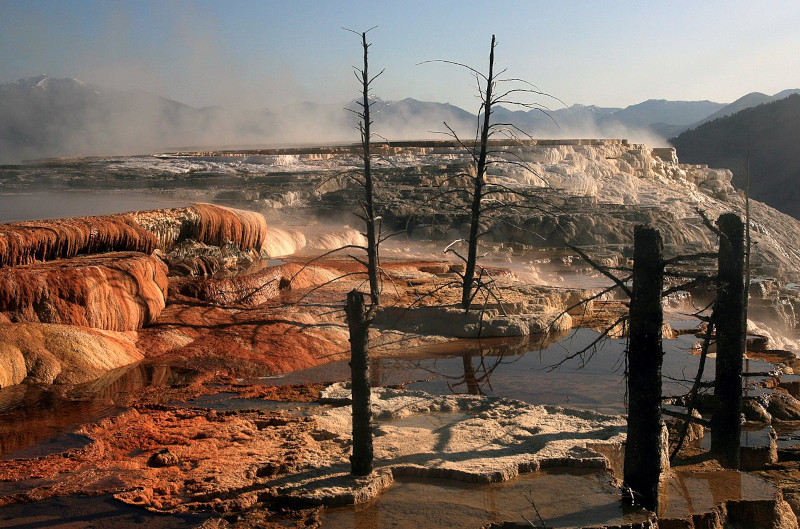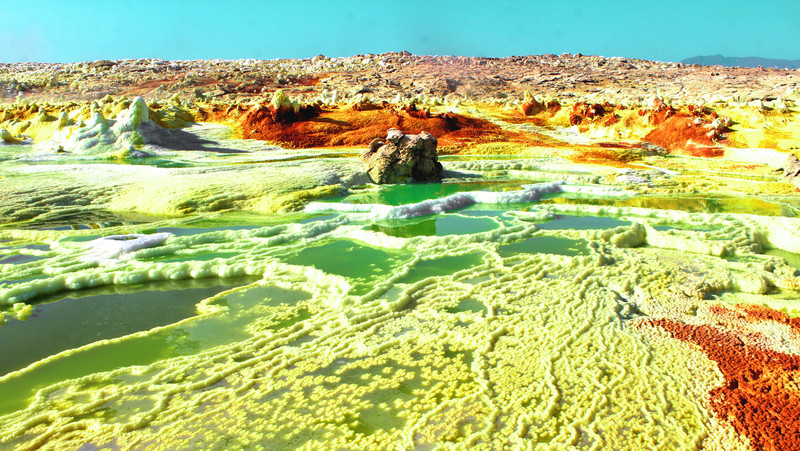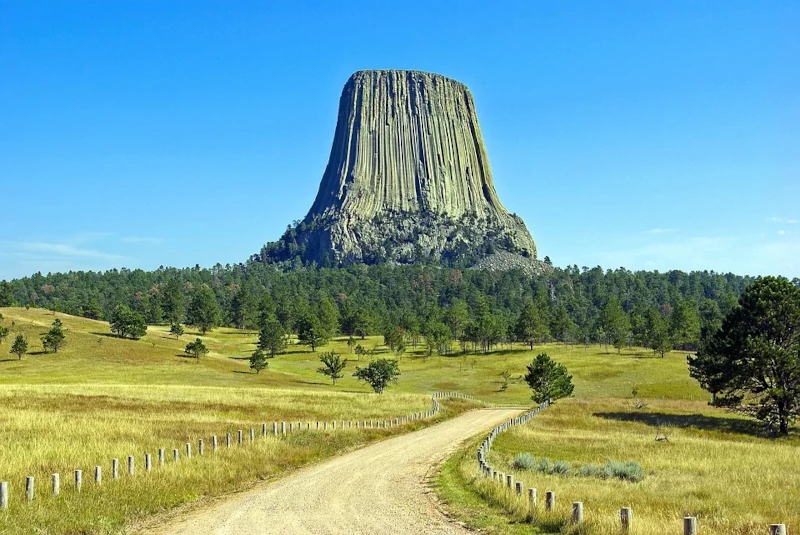
Mammoth Hot Springs Facts
- The term Mammoth Hot Springs serves as the general name most frequently applied to a collective group of individual marvels of Nature. It’s also the only accepted general title used for this incredible location today. That wasn’t the case in the past, though.
- That’s because it previously held another descriptive english language appellation. The original english language epithet applied to it was that of White Mountain Hot Spring. Allegedly, this marvel of geological processes also held even earlier english names.
- Those, however, appear to be lost. Local Indigenous Peoples long knew of the existence of this extraordnary site, of course. Their various native languages held different tags for both the overall location and the many individual features found within it.
- The first known recording of it by outsiders, though, occurred in 1871. That discovery took place due to the explorations of the Hayden Survey of the region. It’s known, however, that others knew of it before, but never bothered to record the discovery.
- Fortunately, the incredible Mammoth Hot Springs now enjoys a certain amount of protection from the depredations of man. That’s true because the natural wonder form part of the federally protected greater area now known as Yellowstone National Park.
Related Articles




Mammoth Hot Springs Physical Description
The mind-blowing Mammoth Hot Springs instantly captures the attention of all those who visit this other-worldly site. Yet, it does so for various reasons, due to the visual splendor and distinctiveness of this product of time and natural hydrothermal processes.
The most astounding fact about this location is the sheer number and variety of individual features. Each of these merit attention and appreciation in their own rights. Collected into a single setting, they make for a viewing experience that virtually defies description.
That’s true since at least 60 separate structures of natural geothermal origin appear within the confines of this single wonder of the natural world. Many of them, in fact, fully merit their own high levels of respect and apprecition One such is Minerva Springs and Terrace.
The basic structure of Mammoth Hot Springs consists of a wide, terraced hillside. That’s further formed of the mineral travertine, deposited by the springs. This itself is formed primarily of the large amounts of calcium carbonate exuded by the various formations.
The water itself also catches eye. Though its source sits outside the Yellowstone caldera, the same volcanic system provides its energy. This maintains a mean temperature of about 170 F (80 C). Yet, the amazing mineral composition only accounts for some of the many hues.

Mammoth Hot Springs Location, Formation, and Ecology
The indescribable Mammoth Hot Springs formed in a general region of the world already well known for its abundance of natural wonders. Given the information already provided herein, that location won’t surprise anyone who knows of Yellowstone National Park.
That’s because both the park itself, and this remarkable work of geothermal processes sit on part of the continent of North America. There, it resides in the western section of the United States. The park borders three states, but this marvel itself lies inside Wyoming.
The formation of this marvel extends into the distant past. Three separate supereruptions took place here, 2.1 million, 1.3 million, and 640,000 years ago. The last of these, however, created the caldera underlying this site as it currently exists today. Here, its story begins.
During the last ice age, the gargantuan ice sheet and the thermal activity here interacted. The movement of the glacier carted away earlier mineral deposits. Subsequent to the recession of that immense ice sheet, the construction of the various features we see today began.
The travertine deposits required thousands of years to build to where they are today. The nature of that action also created the tiered effects now present. Variations in chemistry additionally accounts for the different colors and shades appearing in different sections.
Yet, despite the incredibly harsh nature of the environment of Mammoth Hot Springs, life still appears here. That’s due to the fact that microorganisms called thermophiles live, and actually thrive in the hot water. A few species of mites and flies then feed on these.
Features Sharing Its Region



Check out our other articles on 7 Magnificent West Coast Marvels, Harp Seal, Sacred Valley, European Honey Buzzard, Sicilan Fir, Spinetail mobula, Scarce Swallowtail, Black Mamba









Leave a Reply